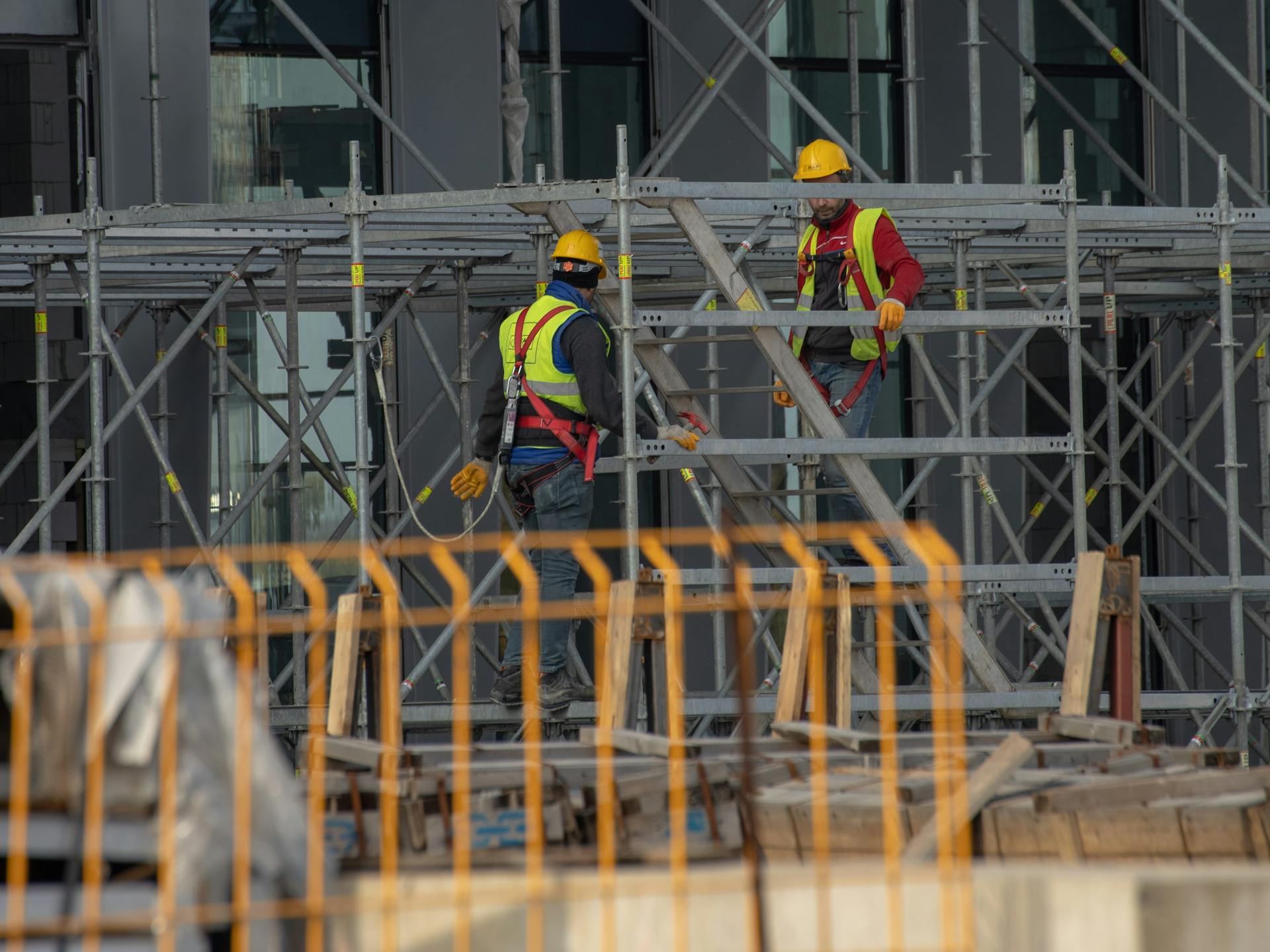Construction sites are inherently hazardous environments, with workers exposed to a variety of risks every day. Among the most common and preventable incidents are slip and fall accidents. These incidents may seem minor at first glance, but they often lead to severe injuries, lost work time, and in some cases, long-term disability. Understanding the causes of slip and fall accidents on construction sites is critical for preventing them and protecting both workers and businesses.

The High-Risk Nature of Construction Work
Construction projects involve complex activities, heavy machinery, elevated surfaces, and a constant flow of workers and materials. This fast-paced, high-pressure environment leaves little room for error. While safety regulations are in place, the unpredictable nature of construction work means hazards can emerge unexpectedly.
Slip and fall accidents are a leading cause of construction site injuries, resulting in costly workers’ compensation claims, project delays, and potential liability for contractors and property owners.
Poor Housekeeping and Clutter
One of the most common contributors to slip and fall incidents is poor housekeeping. Tools, materials, cords, and debris left scattered across walkways can easily become tripping hazards. Wet or slippery surfaces caused by spills, rain, or snow can also lead to accidents if not addressed immediately.
Employers are responsible for ensuring that designated walkways remain clear and that any spills or obstructions are promptly dealt with. Workers should be trained to keep their work areas organized and to report hazards immediately to supervisors.
Uneven or Damaged Walking Surfaces
Uneven ground, potholes, and broken pavement can be particularly dangerous on construction sites. When workers are carrying heavy loads or focusing on their tasks, they may not notice an uneven surface until it’s too late.
In multi-level construction projects, improperly installed scaffolding or platforms can also cause trips and falls. Routine inspections should be conducted to identify and repair hazards before they cause harm.
Weather-Related Hazards
Construction work often continues in various weather conditions, making weather-related hazards unavoidable. Rain, snow, and ice can create slippery conditions on scaffolds, ladders, and open walking surfaces.
Employers should have protocols in place for salting icy areas, covering wet surfaces, and providing slip-resistant footwear. These steps can significantly reduce the risk of weather-related slip and fall accidents.
Inadequate Lighting
Poor lighting is a serious safety hazard, especially during early morning or evening work, or in indoor areas without adequate natural light. Dimly lit workspaces make it difficult to spot spills, debris, or changes in floor elevation.
Temporary lighting solutions, such as portable work lights and overhead fixtures, should be installed in poorly lit areas to ensure visibility for all workers.
Improper Footwear and Safety Gear
Workers who fail to wear the proper footwear for a construction environment are at greater risk of slips and falls. Footwear with worn-out soles, poor traction, or inadequate ankle support increases the likelihood of losing balance.
Employers should require safety boots that meet industry standards and provide appropriate personal protective equipment (PPE) for different site conditions.
The Legal Perspective on Slip and Fall Incidents
Slip and fall accidents on construction sites can result in serious legal and financial consequences for employers, contractors, and property owners. Injured workers may be entitled to compensation for medical expenses, lost wages, and other damages. In these cases, slip and fall attorneys can help injured workers pursue their legal rights, investigate the cause of the accident, and determine who may be liable.
From a legal standpoint, the key question often revolves around negligence—whether the responsible parties failed to take reasonable measures to maintain a safe work environment. This includes following OSHA regulations, conducting regular safety inspections, and providing adequate training for workers.
Construction Site Regulations and Standards
The Occupational Safety and Health Administration (OSHA) sets strict standards to protect workers from slip and fall hazards. These include requirements for guardrails, fall protection systems, proper housekeeping, and hazard communication. Employers who fail to comply with these regulations can face fines, lawsuits, and reputational damage.
Regular training sessions should be held to educate workers on recognizing hazards and using safety equipment effectively. Employers should also ensure that safety measures are enforced consistently across all job sites.
Preventing Slip and Fall Accidents
Prevention starts with awareness. Supervisors and workers alike should be vigilant in identifying hazards and addressing them promptly. This includes:
- Conducting daily safety checks before work begins
- Ensuring proper storage of tools and materials
- Maintaining clear pathways and work areas
- Using warning signs for wet or slippery areas
- Providing slip-resistant mats or flooring where needed
By implementing proactive measures, construction companies can significantly reduce the risk of accidents and protect both their workforce and their bottom line.
The Role of Accident Investigations
When a slip and fall occurs, a thorough investigation should be conducted to determine the root cause and prevent recurrence. Accident investigations may involve reviewing site conditions, interviewing witnesses, and examining safety protocols.
For serious incidents, legal counsel may be necessary to ensure the investigation is conducted properly and that all relevant evidence is preserved. Working with construction accident attorneys in Chicago can help ensure that injured workers’ rights are protected while also safeguarding the employer’s legal interests.
Common Injuries from Slip and Fall Accidents
Slip and fall accidents can result in a wide range of injuries, from minor sprains and bruises to life-altering conditions such as traumatic brain injuries or spinal cord damage. Recovery times vary depending on the severity of the injury, and in some cases, workers may be unable to return to their previous roles.
This not only impacts the injured worker’s livelihood but can also affect project timelines, increase insurance premiums, and lead to costly workers’ compensation claims.
Financial Impact on Construction Projects
Beyond the human cost, slip and fall accidents can have a substantial financial impact on construction companies. Delays caused by injured workers, legal disputes, and potential regulatory penalties can derail project budgets and schedules.
Insurance premiums often rise following multiple claims, and the negative publicity from a serious accident can harm a company’s reputation in the industry. Taking preventive action is not only a moral responsibility but also a smart financial decision.
Training and Culture of Safety
A strong safety culture can significantly reduce slip and fall incidents on construction sites. Employers should prioritize ongoing training, encourage workers to report hazards without fear of retaliation, and reward safe behavior.
Safety meetings, toolbox talks, and clear communication about site-specific hazards help reinforce the importance of vigilance. When workers understand that their safety is valued, they are more likely to take the necessary precautions to protect themselves and their colleagues.










